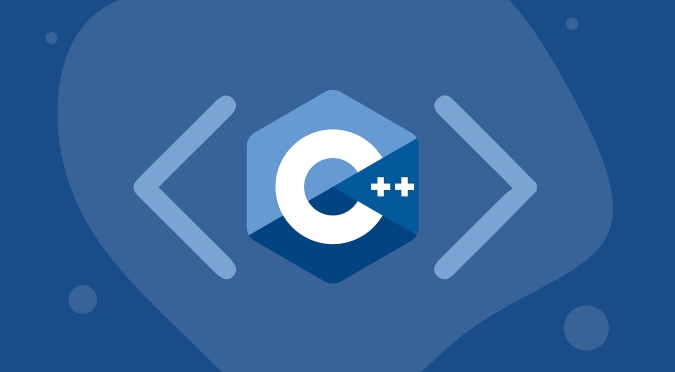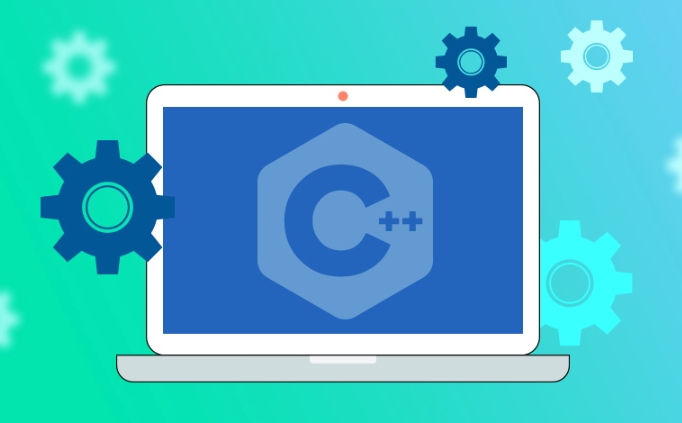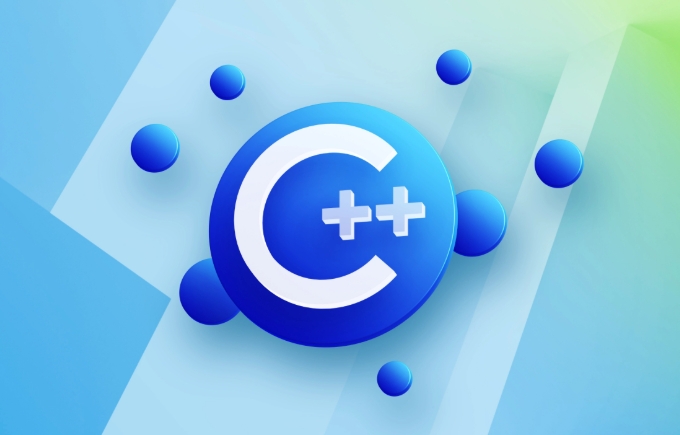How to use OpenCV with C for image processing?
Using OpenCV and C for image processing is not complicated. You can quickly get started by mastering the basic process and common functions. 1. Installation and environment configuration: Ensure that OpenCV is installed correctly, Linux can be installed with package manager, Windows can use vcpkg or manually configure the path, and test whether it is normal through a simple program; 2. Basic image operations: use cv::imread() to read, cv::imshow() to display, cv::imwrite() to save the image, and pay attention to the necessity of path judgment and waitKey(); 3. Common image processing operations: including grayscale, Gaussian blur, Canny edge detection and threshold processing, which are usually used in the preprocessing stage; 4. Custom convolution kernel filtering: Flexible filtering is realized through cv::filter2D(), such as sharpening operations, and the boundary processing method can be set. After mastering these contents, you can carry out actual image processing tasks.

Using OpenCV and C for image processing is actually not complicated. As long as you master the basic process and commonly used functions, you can get started quickly. OpenCV provides rich image processing functions, which can be easily implemented from reading and displaying images to filtering, edge detection and other operations.

Below are some common usage scenarios and suggestions, suitable for C developers who are new to OpenCV.

1. Installation and Environment Configuration
Before you start, you must first make sure that OpenCV is installed and configured correctly in your development environment.
A common practice is to use a package manager to install it (such as using apt-get install libopencv-dev on Ubuntu), or download the source code from the official website and compile it yourself.
If you are using Visual Studio on Windows, you can configure the include path, lib file, and dll file locations with vcpkg or manually.

Tip: After the configuration is completed, write a simple "Read and display pictures" program to test whether it works normally.
2. Basic operations of images: read, display, save
The most basic image operations in OpenCV include reading images, displaying images, and saving results.
- Read image files using
cv::imread() - Use
cv::imshow()to display the image window - Use
cv::imwrite()to save the processed image
cv::Mat img = cv::imread("input.jpg");
cv::imshow("Image", img);
cv::waitKey(0); // Wait for the key press to prevent the window from closing cv::imwrite("output.jpg", img);What should be noted is:
- If the path is wrong or the file is corrupt, the Mat object returned
imread()will be empty, and it is best to add judgment logic. -
waitKey()is required, otherwise the image window may flash by.
3. Common image processing operations
OpenCV provides many commonly used image processing functions, and the following are some typical applications:
- Grayscale :
cv::cvtColor(src, dst, cv::COLOR_BGR2GRAY); - Gaussian fuzzy :
cv::GaussianBlur(src, dst, cv::Size(5,5), 0); - Edge detection (Canny) :
cv::Canny(src, dst, 100, 200); - Threshold processing :
cv::threshold(src, dst, 128, 255, cv::THRESH_BINARY);
These operations are usually used in the image preprocessing stage to prepare for subsequent object recognition and feature extraction.
For example, in edge detection, converting it to a grayscale diagram first and then calling Canny is better, which is a detail that many beginners are likely to ignore.
4. Customize the convolution kernel for filtering
If you want to perform more flexible filtering operations on images, you can use the cv::filter2D() function to customize the convolution kernel.
For example, create a sharpening filter:
cv::Mat kernel = (cv::Mat_<float>(3,3) <<
0, -1, 0,
-1, 5, -1,
0, -1, 0);
cv::filter2D(src, dst, -1, kernel);This operation is often used to enhance image details, but pay attention to the boundary processing method, which can be controlled by setting the borderType parameter.
Basically that's all. After mastering these common operations, you can do some actual image processing tasks. Not complicated, but there are some small details that are easy to ignore.
The above is the detailed content of How to use OpenCV with C for image processing?. For more information, please follow other related articles on the PHP Chinese website!

Hot AI Tools

Undress AI Tool
Undress images for free

Undresser.AI Undress
AI-powered app for creating realistic nude photos

AI Clothes Remover
Online AI tool for removing clothes from photos.

Clothoff.io
AI clothes remover

Video Face Swap
Swap faces in any video effortlessly with our completely free AI face swap tool!

Hot Article

Hot Tools

Notepad++7.3.1
Easy-to-use and free code editor

SublimeText3 Chinese version
Chinese version, very easy to use

Zend Studio 13.0.1
Powerful PHP integrated development environment

Dreamweaver CS6
Visual web development tools

SublimeText3 Mac version
God-level code editing software (SublimeText3)

Hot Topics
 How to pass a function as a parameter in C ?
Jul 12, 2025 am 01:34 AM
How to pass a function as a parameter in C ?
Jul 12, 2025 am 01:34 AM
In C, there are three main ways to pass functions as parameters: using function pointers, std::function and Lambda expressions, and template generics. 1. Function pointers are the most basic method, suitable for simple scenarios or C interface compatible, but poor readability; 2. Std::function combined with Lambda expressions is a recommended method in modern C, supporting a variety of callable objects and being type-safe; 3. Template generic methods are the most flexible, suitable for library code or general logic, but may increase the compilation time and code volume. Lambdas that capture the context must be passed through std::function or template and cannot be converted directly into function pointers.
 What is a POD (Plain Old Data) type in C ?
Jul 12, 2025 am 02:15 AM
What is a POD (Plain Old Data) type in C ?
Jul 12, 2025 am 02:15 AM
In C, the POD (PlainOldData) type refers to a type with a simple structure and compatible with C language data processing. It needs to meet two conditions: it has ordinary copy semantics, which can be copied by memcpy; it has a standard layout and the memory structure is predictable. Specific requirements include: all non-static members are public, no user-defined constructors or destructors, no virtual functions or base classes, and all non-static members themselves are PODs. For example structPoint{intx;inty;} is POD. Its uses include binary I/O, C interoperability, performance optimization, etc. You can check whether the type is POD through std::is_pod, but it is recommended to use std::is_trivia after C 11.
 What is the mutable keyword in C ?
Jul 12, 2025 am 03:03 AM
What is the mutable keyword in C ?
Jul 12, 2025 am 03:03 AM
In C, the mutable keyword is used to allow the object to be modified, even if the object is declared as const. Its core purpose is to maintain the logical constants of the object while allowing internal state changes, which are commonly found in cache, debug counters and thread synchronization primitives. When using it, mutable must be placed before the data member in the class definition, and it only applies to data members rather than global or local variables. In best practice, abuse should be avoided, concurrent synchronization should be paid attention to, and external behavior should be ensured. For example, std::shared_ptr uses mutable to manage reference counting to achieve thread safety and const correctness.
 What is memory alignment and why is it important in C ?
Jul 13, 2025 am 01:01 AM
What is memory alignment and why is it important in C ?
Jul 13, 2025 am 01:01 AM
MemoryalignmentinC referstoplacingdataatspecificmemoryaddressesthataremultiplesofavalue,typicallythesizeofthedatatype,whichimprovesperformanceandcorrectness.1.Itensuresdatatypeslikeintegersordoublesstartataddressesdivisiblebytheiralignmentrequiremen
 What is an abstract class in C ?
Jul 11, 2025 am 12:29 AM
What is an abstract class in C ?
Jul 11, 2025 am 12:29 AM
The key to an abstract class is that it contains at least one pure virtual function. When a pure virtual function is declared in the class (such as virtualvoiddoSomething()=0;), the class becomes an abstract class and cannot directly instantiate the object, but polymorphism can be realized through pointers or references; if the derived class does not implement all pure virtual functions, it will also remain an abstract class. Abstract classes are often used to define interfaces or shared behaviors, such as designing Shape classes in drawing applications and implementing the draw() method by derived classes such as Circle and Rectangle. Scenarios using abstract classes include: designing base classes that should not be instantiated directly, forcing multiple related classes to follow a unified interface, providing default behavior, and requiring subclasses to supplement details. In addition, C
 How to generate a UUID/GUID in C ?
Jul 13, 2025 am 02:35 AM
How to generate a UUID/GUID in C ?
Jul 13, 2025 am 02:35 AM
There are three effective ways to generate UUIDs or GUIDs in C: 1. Use the Boost library, which provides multi-version support and is simple to interface; 2. Manually generate Version4UUIDs suitable for simple needs; 3. Use platform-specific APIs (such as Windows' CoCreateGuid), without third-party dependencies. Boost is suitable for most modern projects, manual implementation is suitable for lightweight scenarios, and platform API is suitable for enterprise environments.
 C vs Python performance
Jul 13, 2025 am 01:42 AM
C vs Python performance
Jul 13, 2025 am 01:42 AM
C is usually faster than Python, especially in compute-intensive tasks. 1.C is a compiled language that directly runs machine code, while Python executes while interpreting and executing, which brings additional overhead; 2.C determines the type during compilation and manages memory manually, which is conducive to CPU optimization, and Python dynamic typing and garbage collection increase burden; 3. It is recommended to be used for high-performance scenarios such as game engines and embedded systems. Python is suitable for data analysis and rapid development scenarios with priority efficiency; 4. Performance testing is recommended to use time tools, eliminate I/O interference, and average values multiple times to obtain accurate results.
 Understanding move assignment operator in C
Jul 16, 2025 am 02:20 AM
Understanding move assignment operator in C
Jul 16, 2025 am 02:20 AM
ThemoveassignmentoperatorinC isaspecialmemberfunctionthatefficientlytransfersresourcesfromatemporaryobjecttoanexistingone.ItisdefinedasMyClass&operator=(MyClass&&other)noexcept;,takinganon-constrvaluereferencetoallowmodificationofthesour







